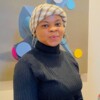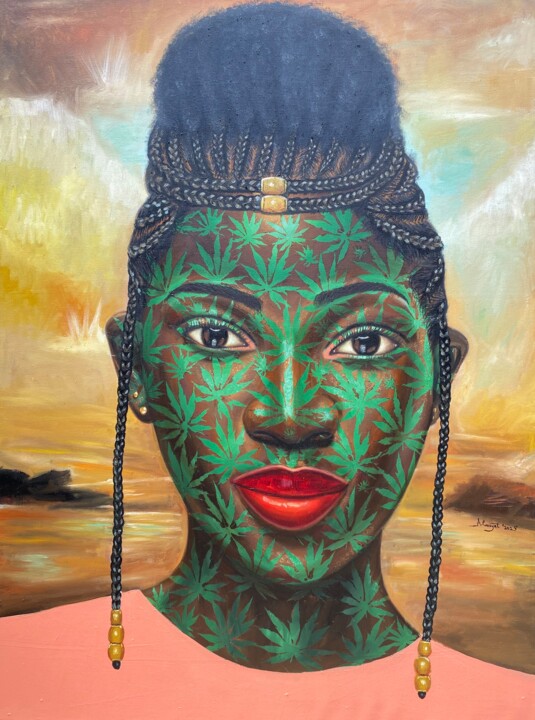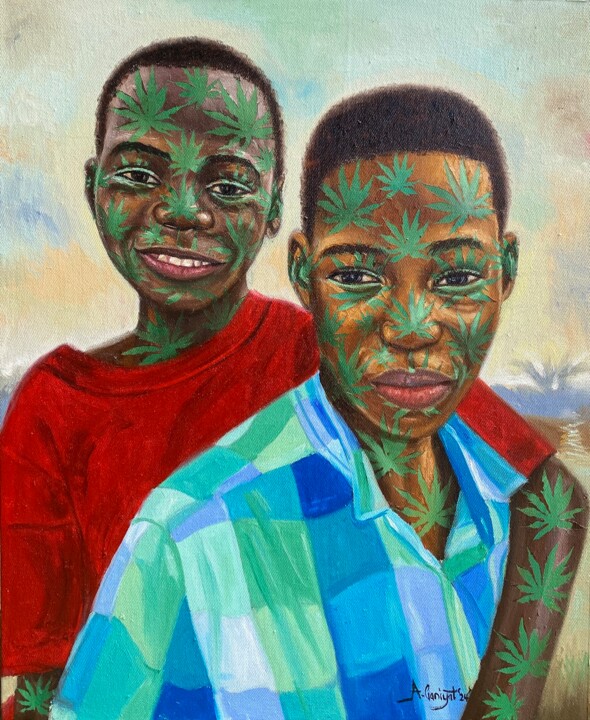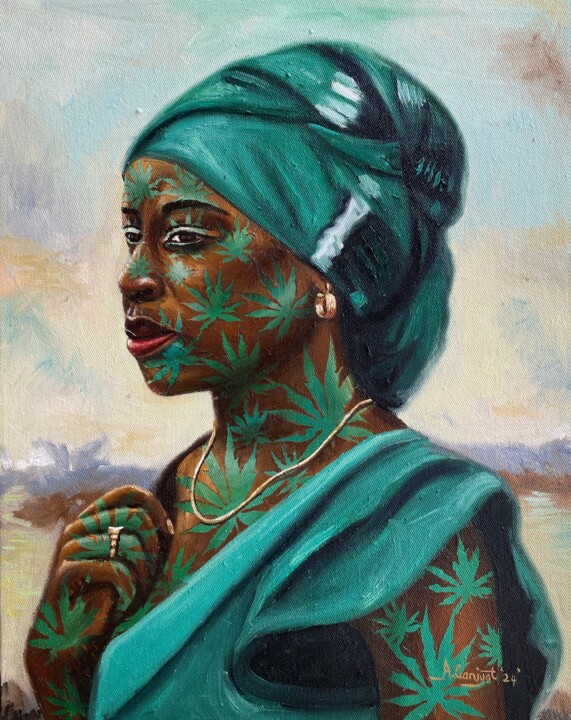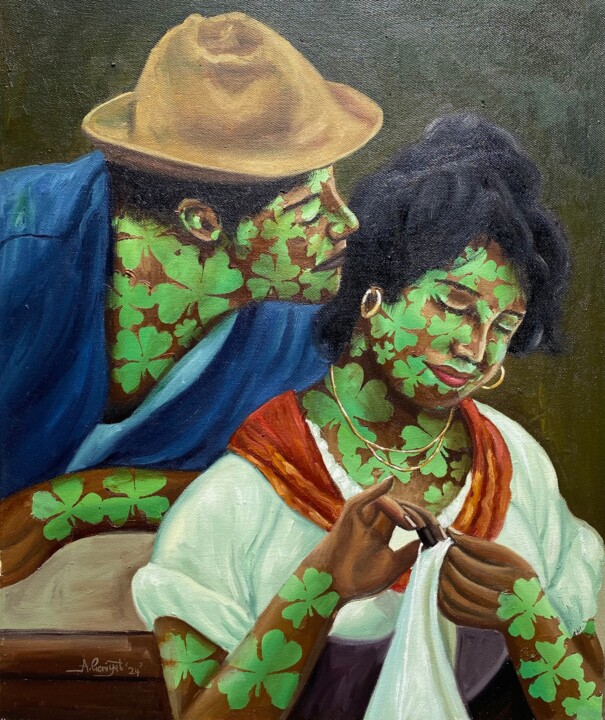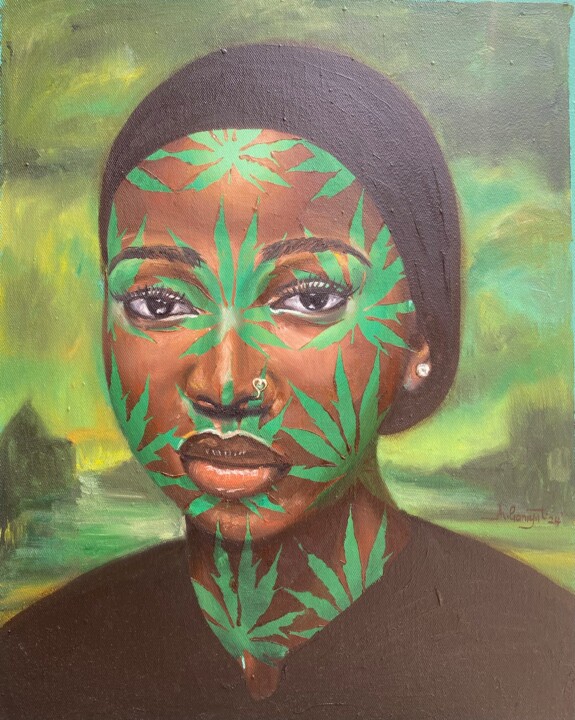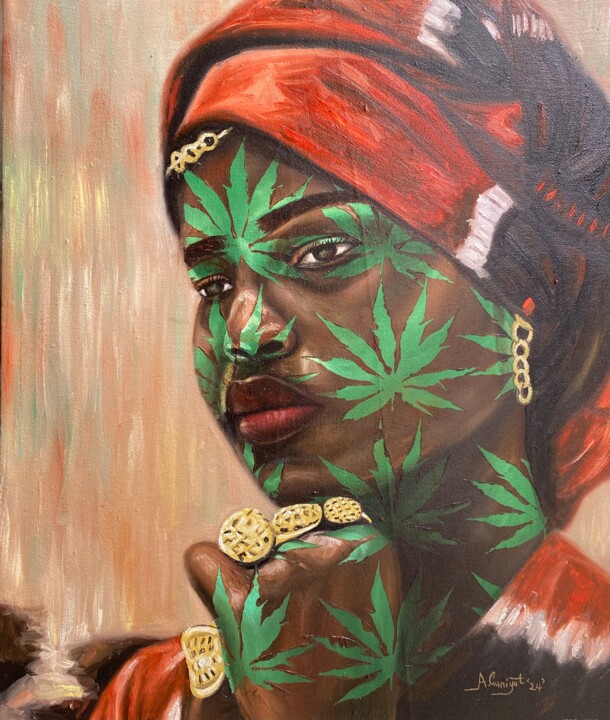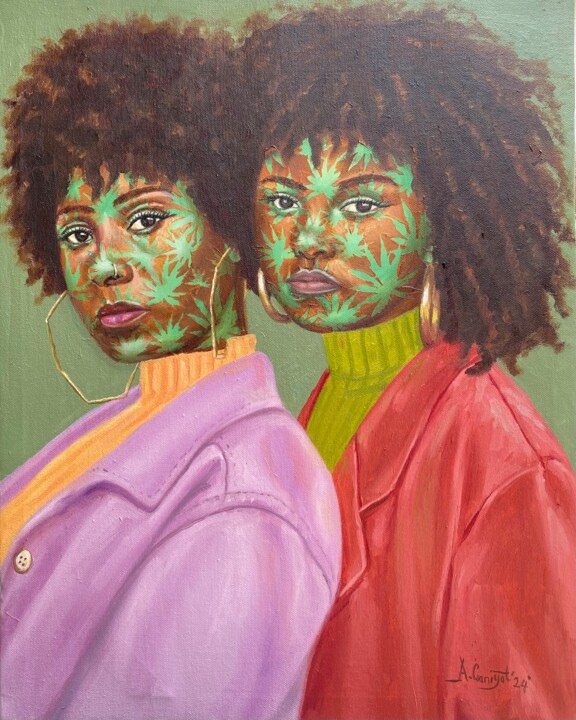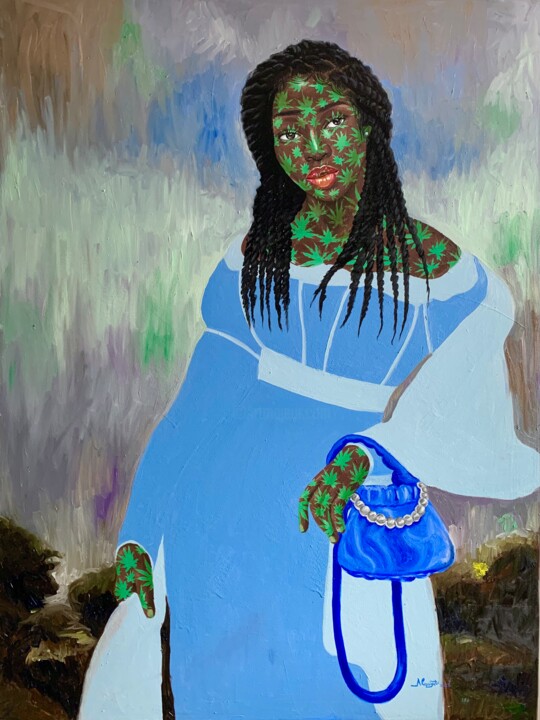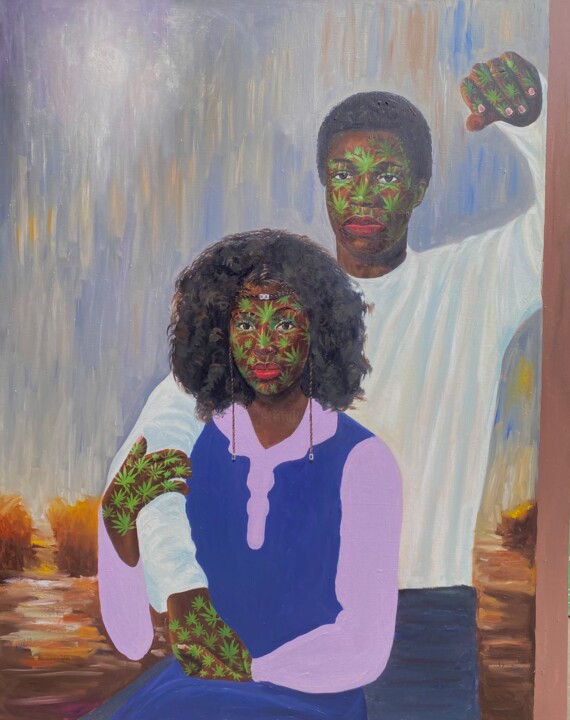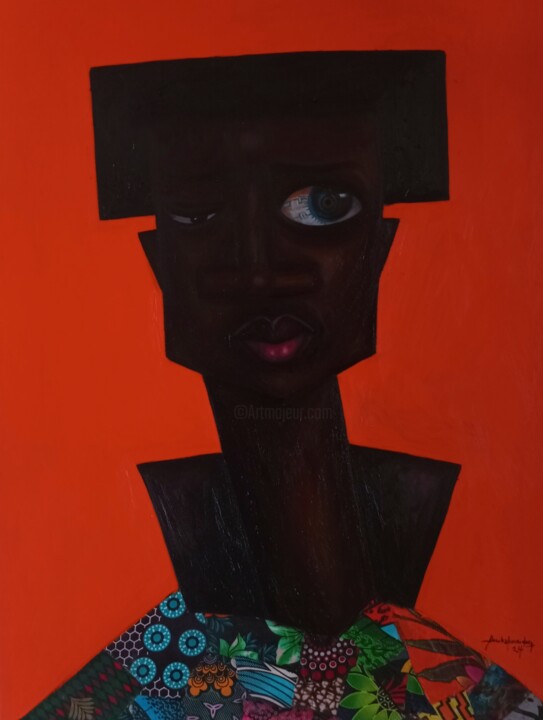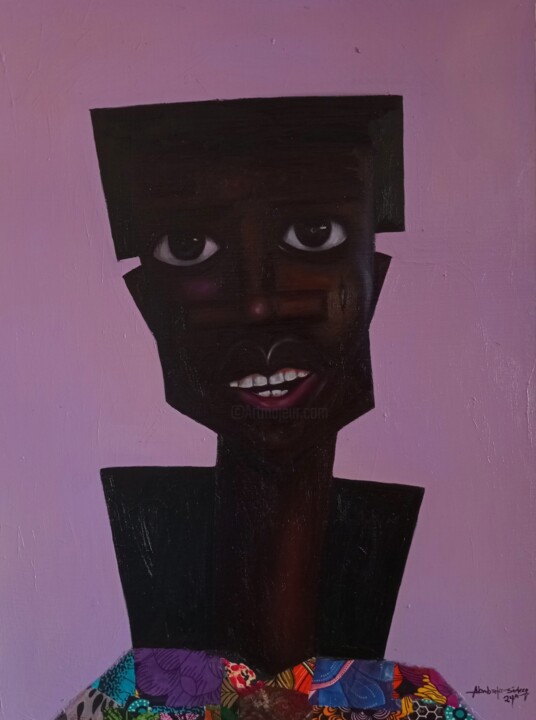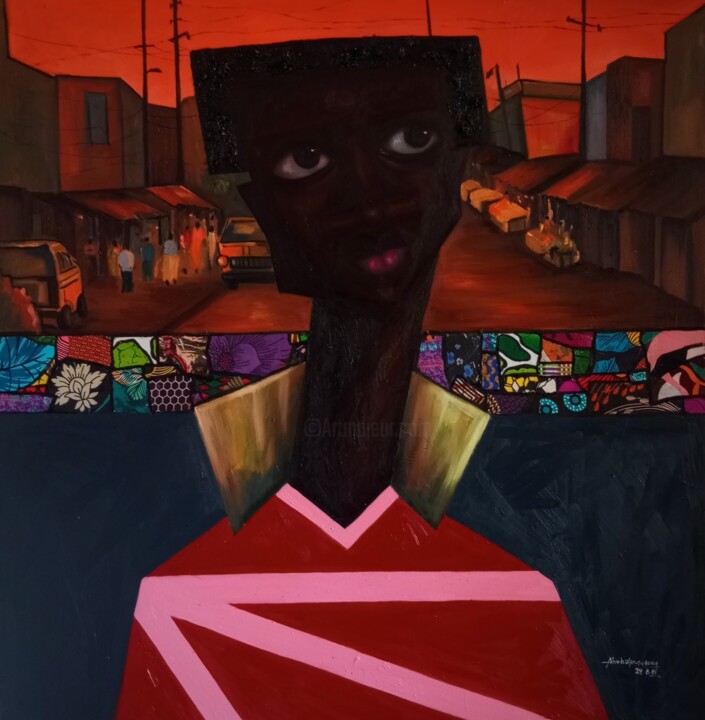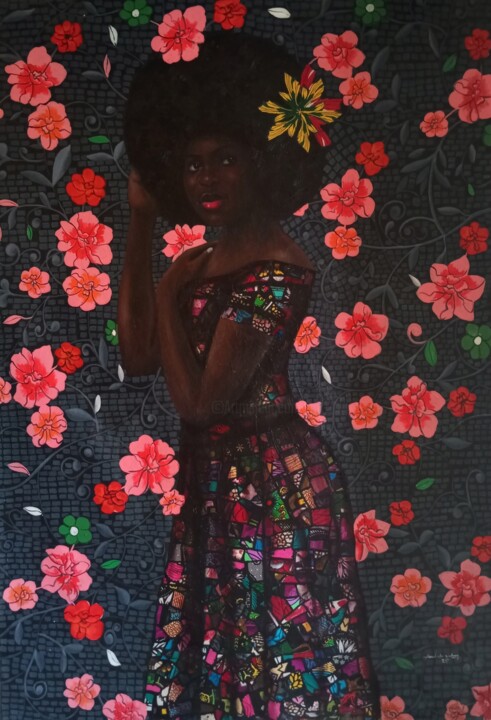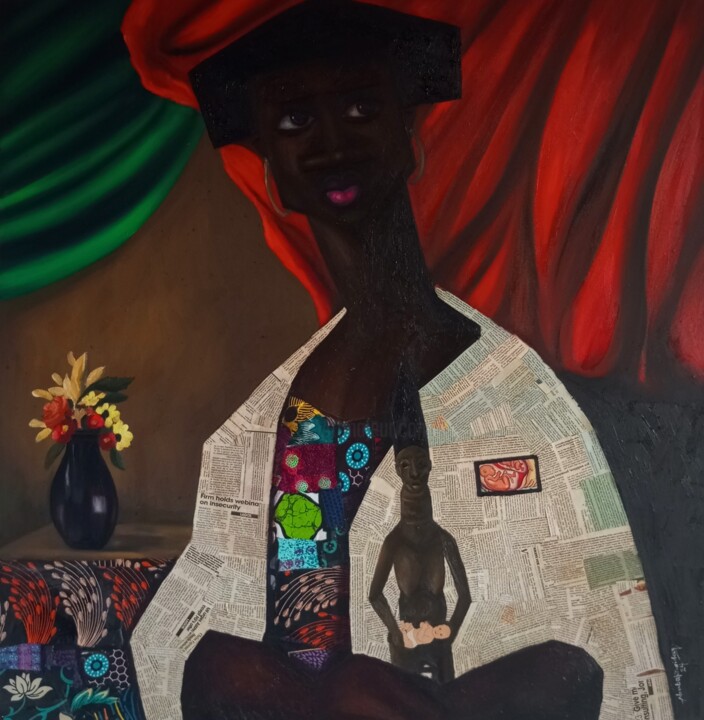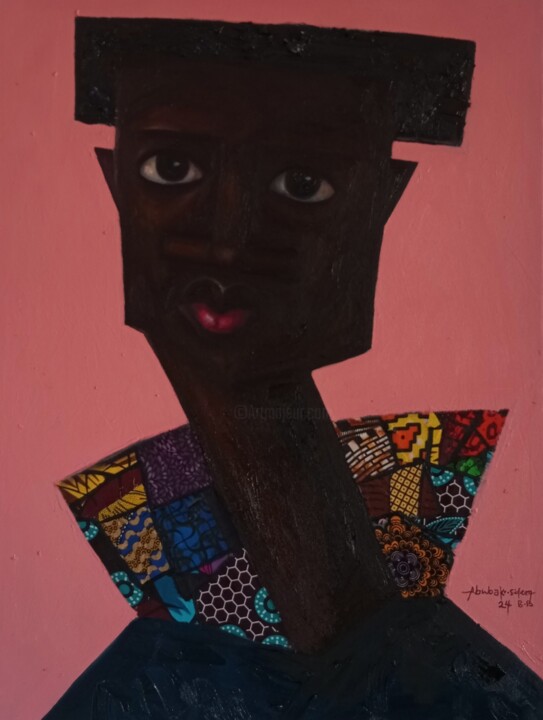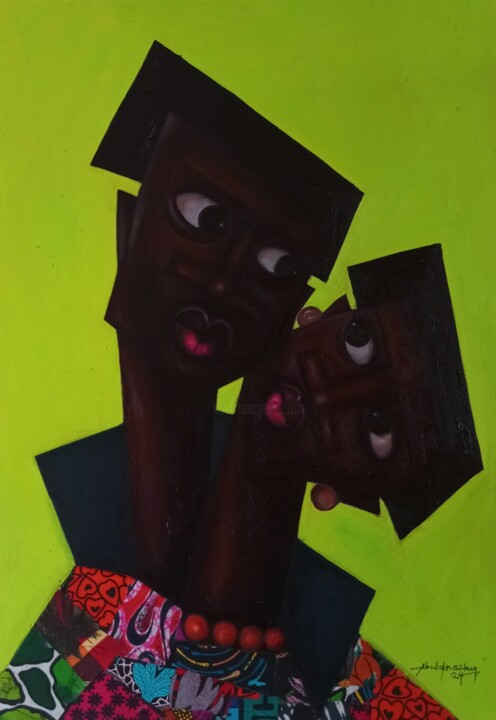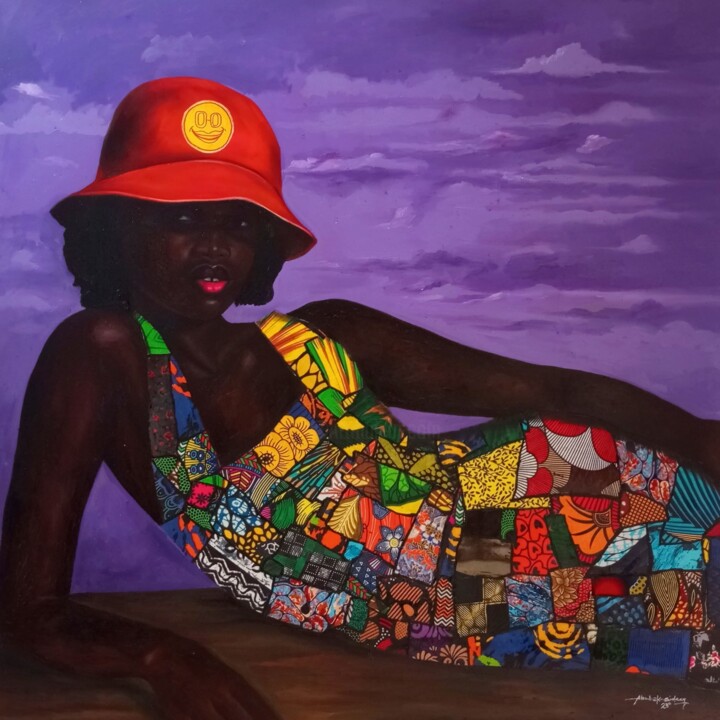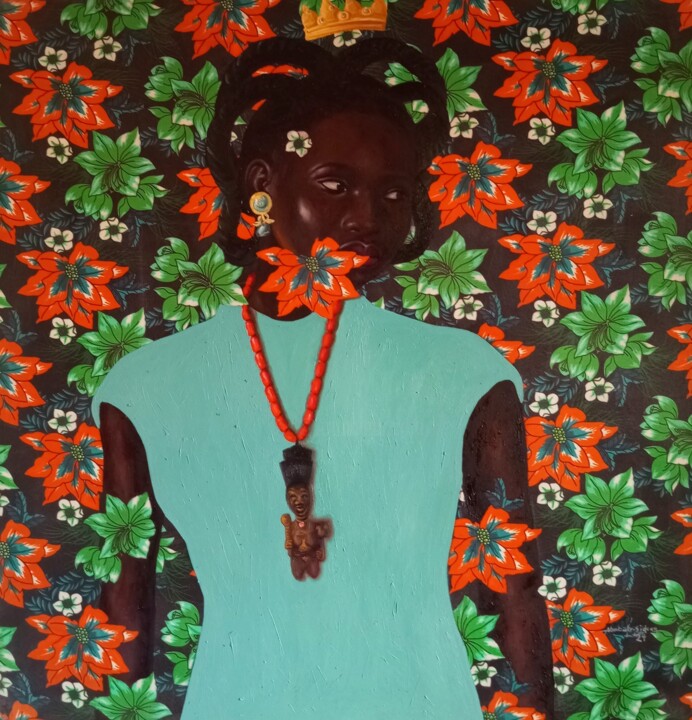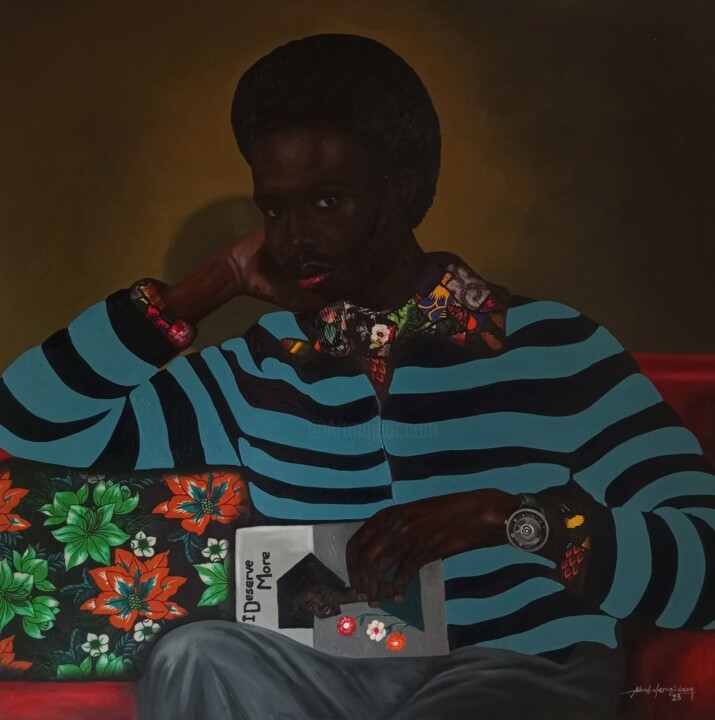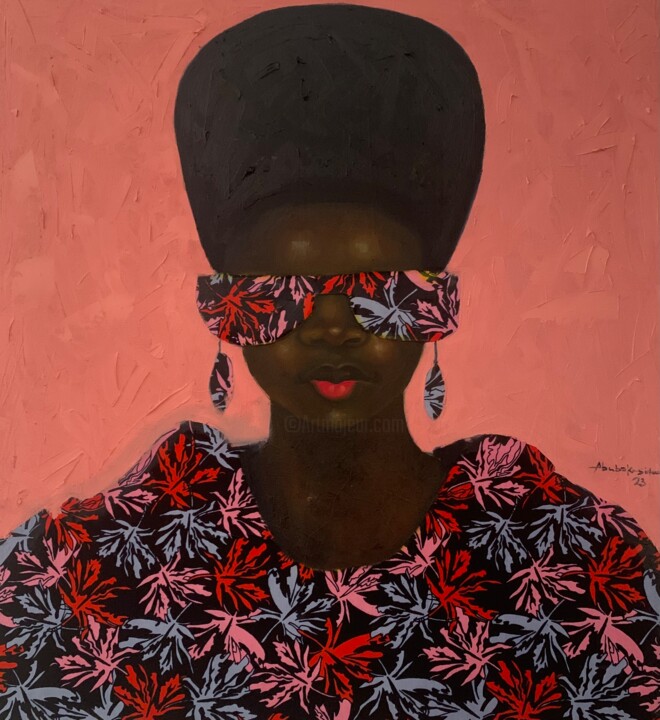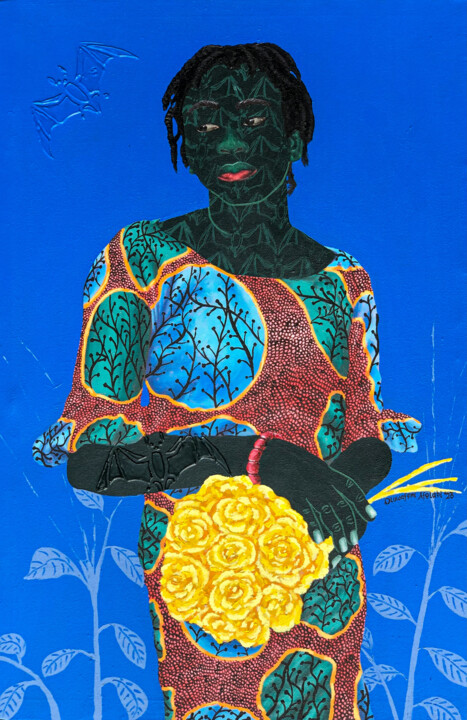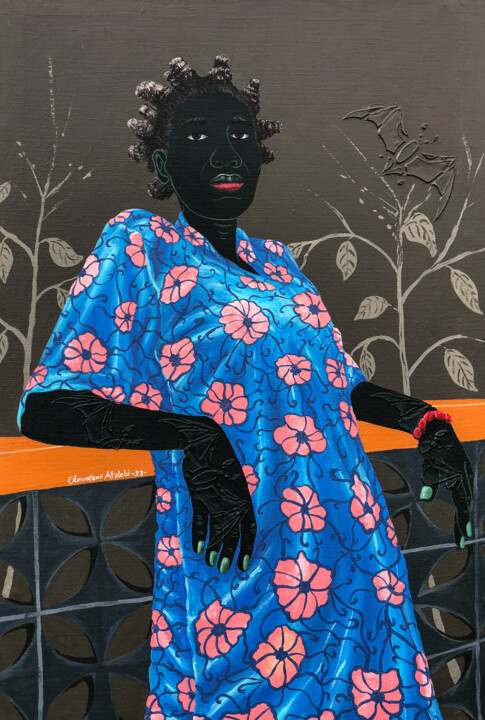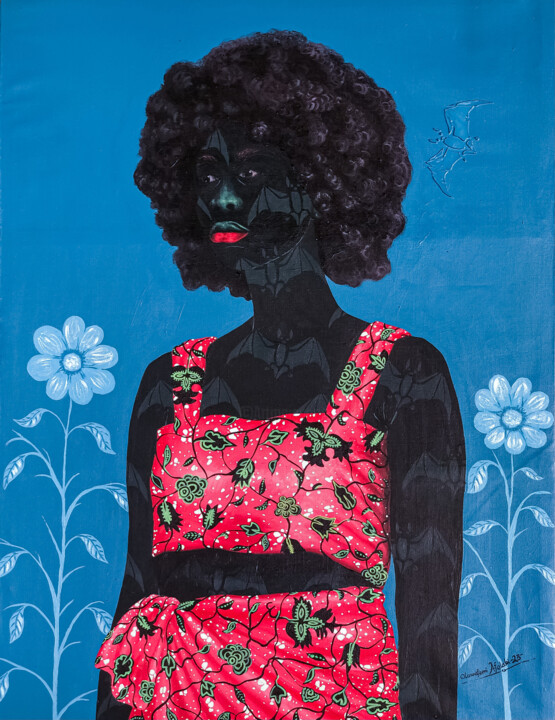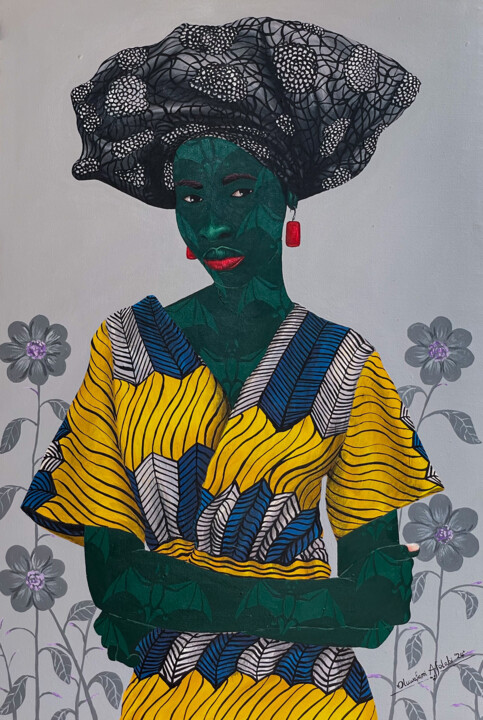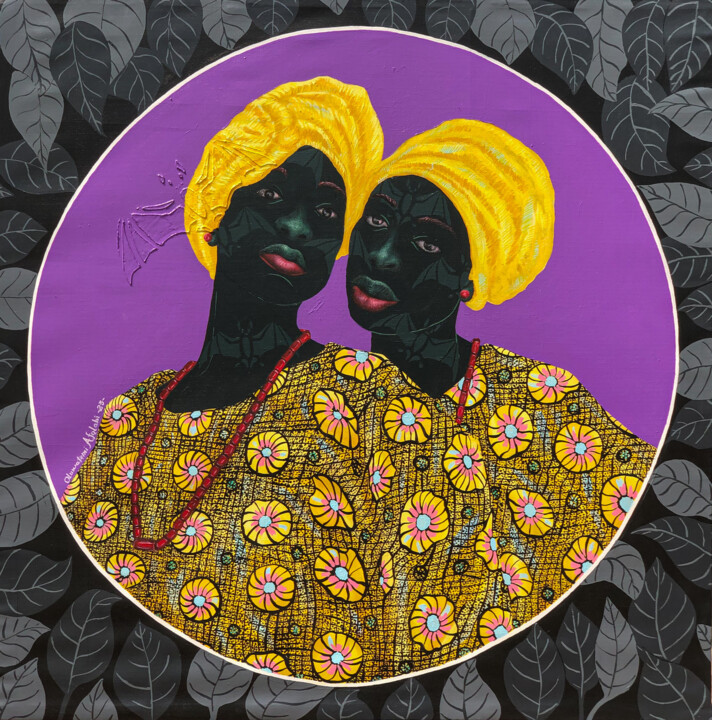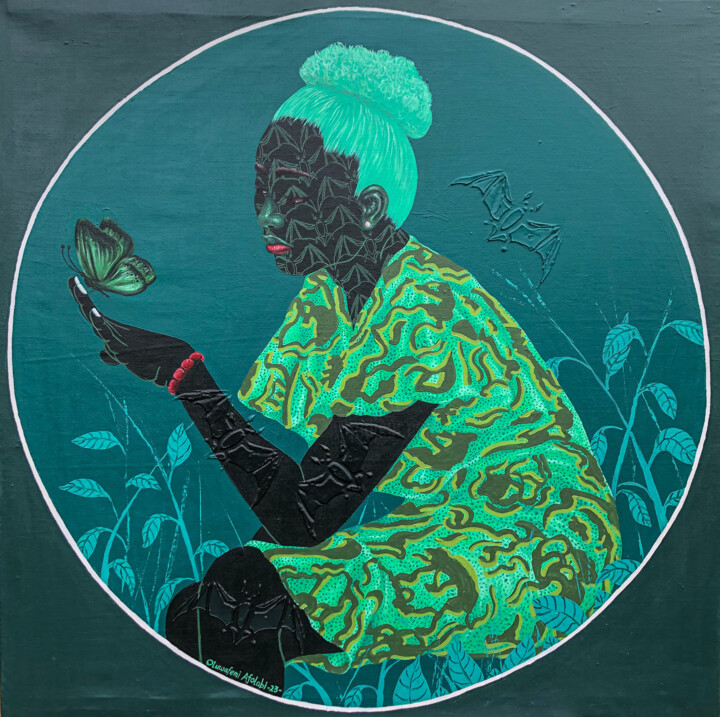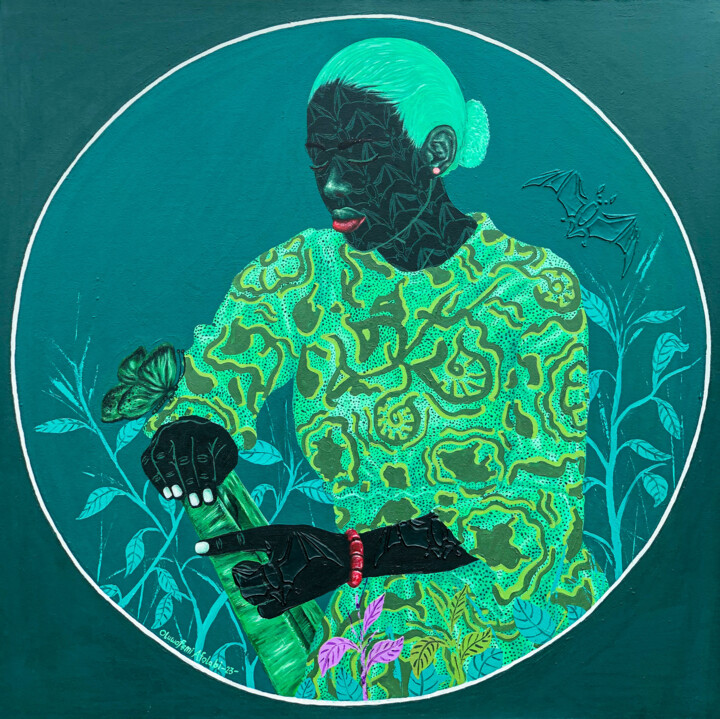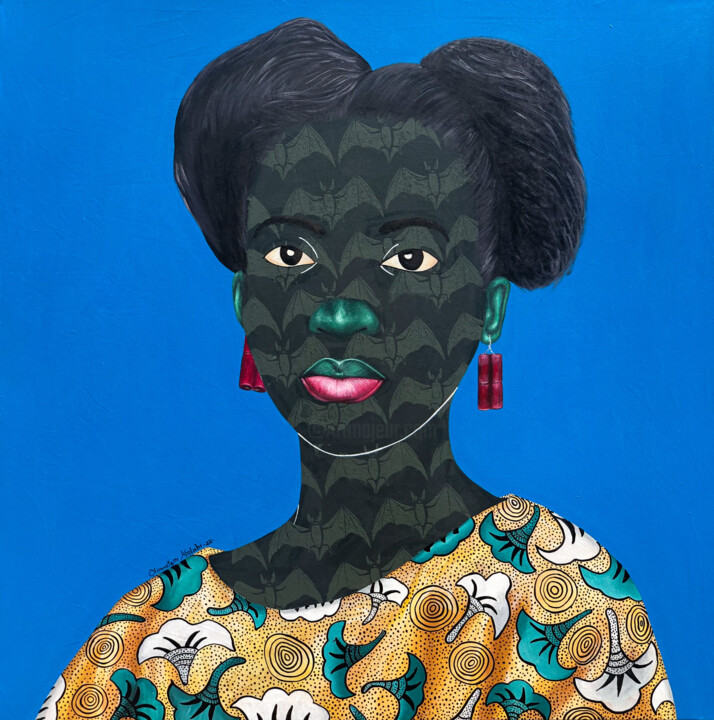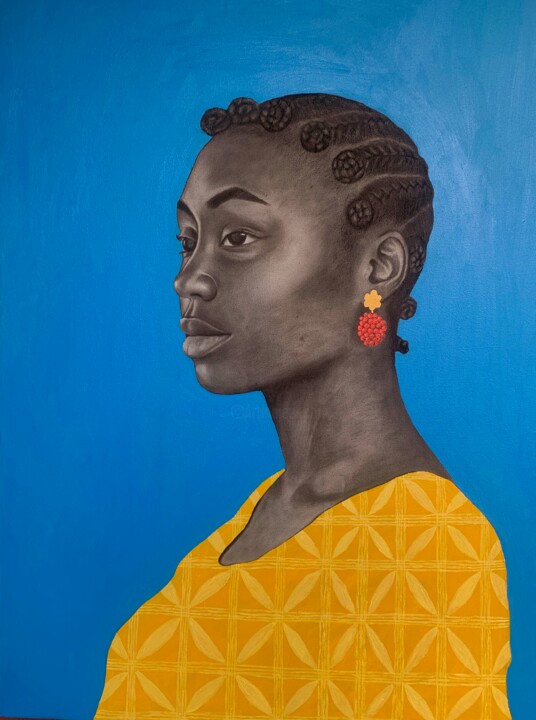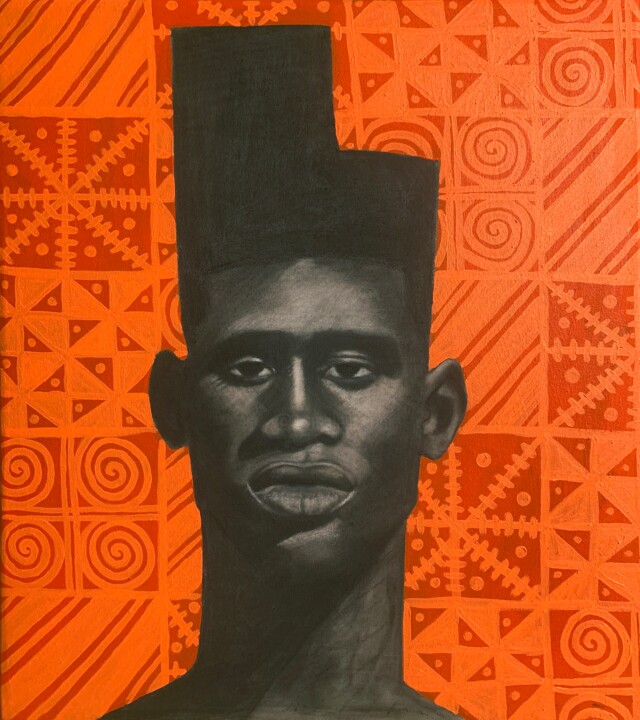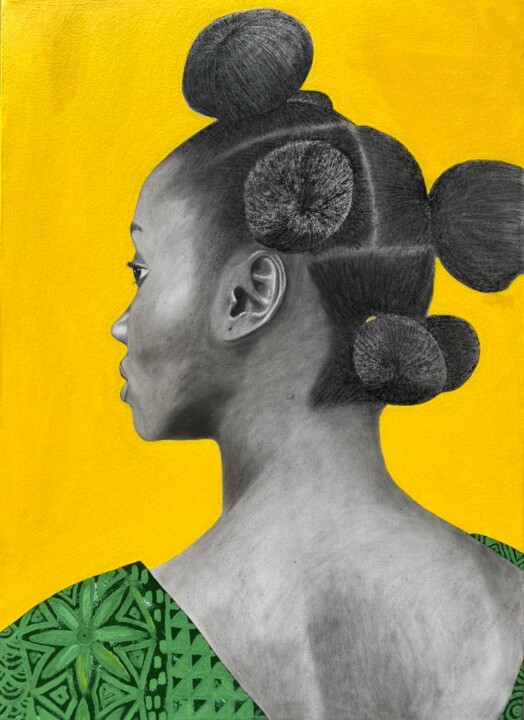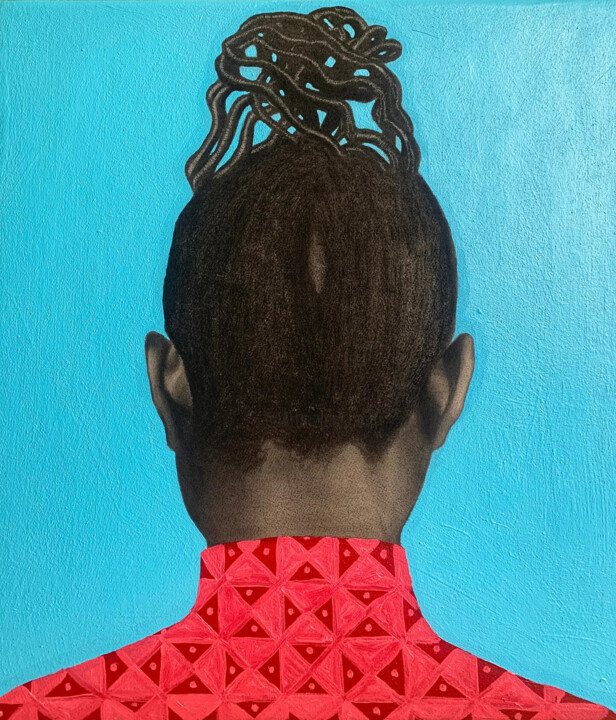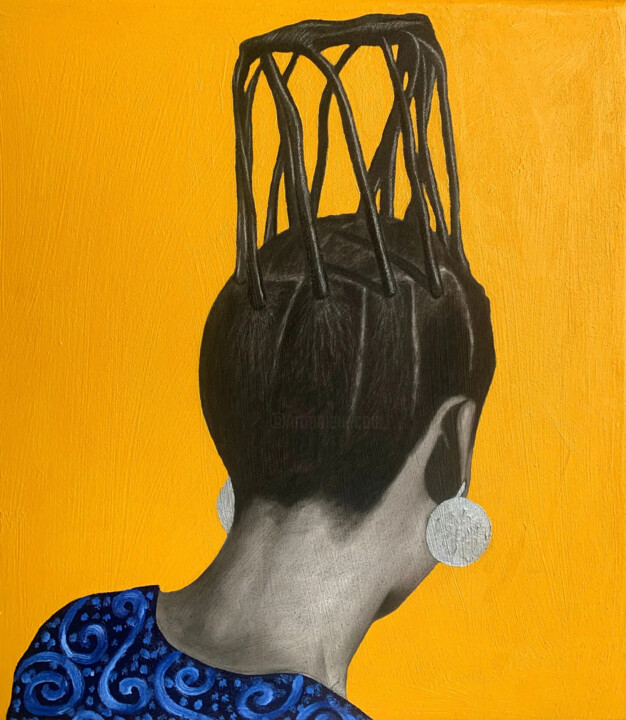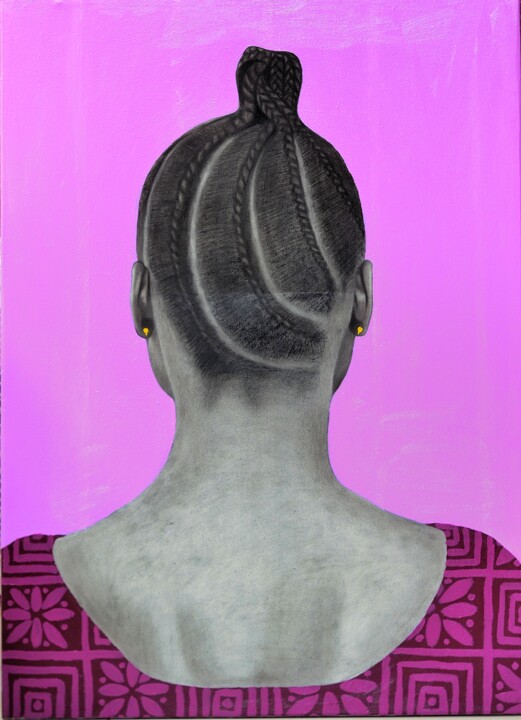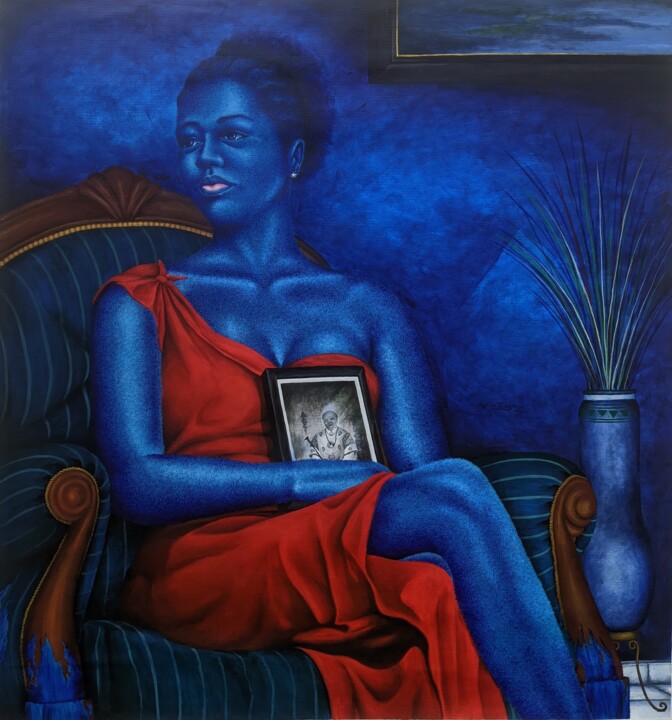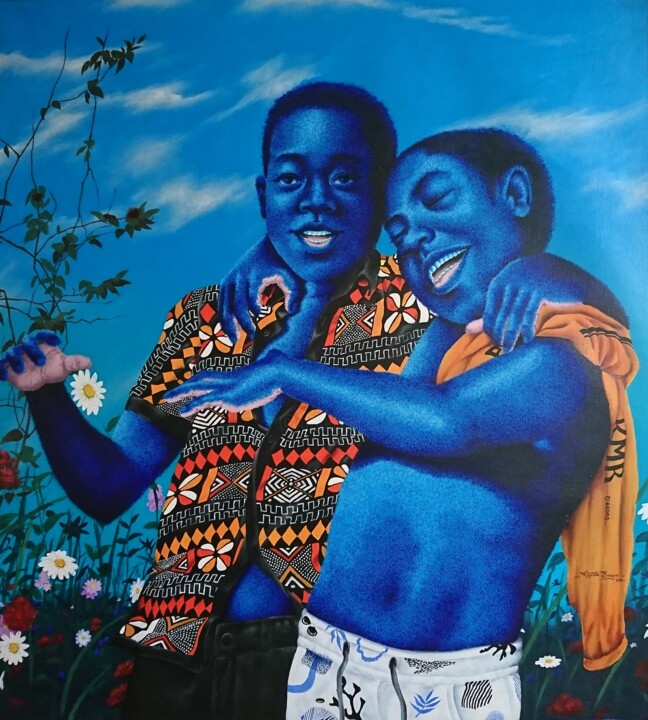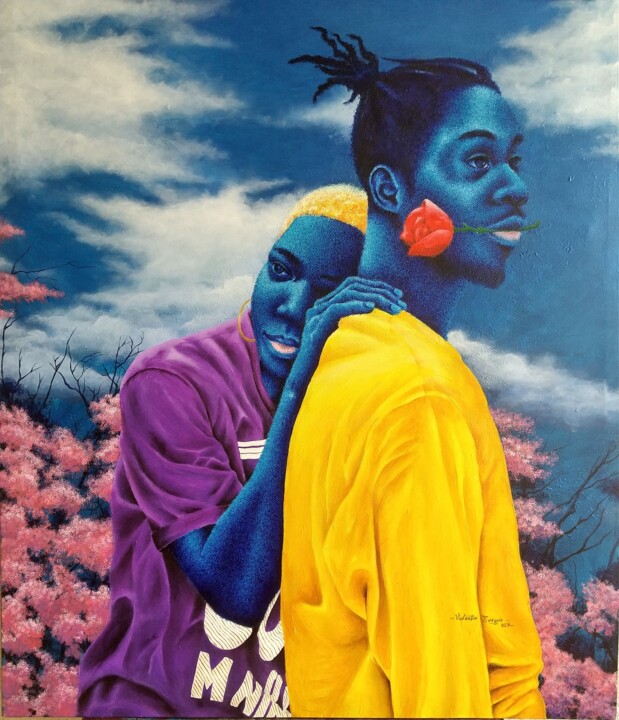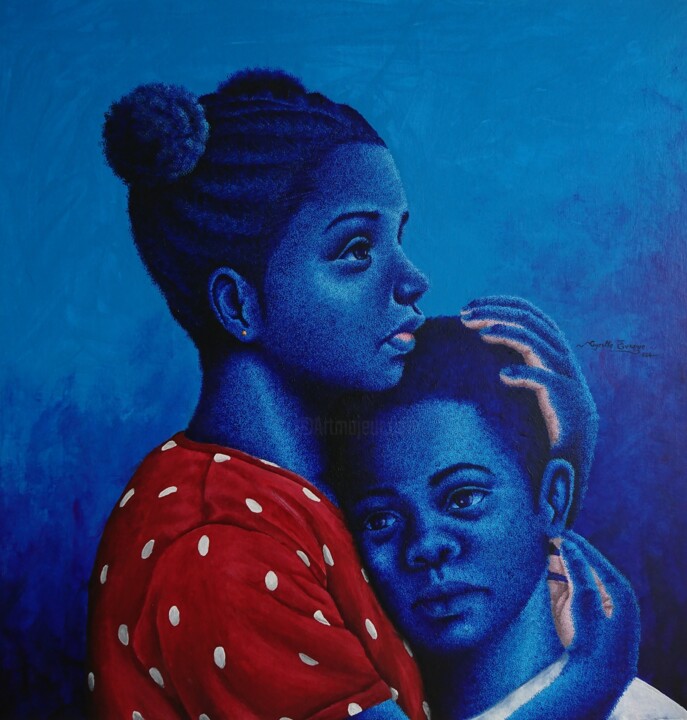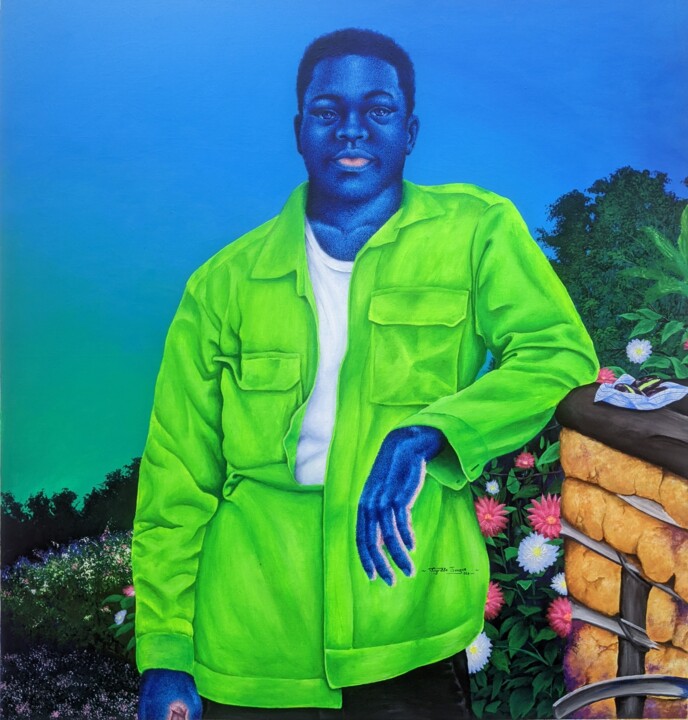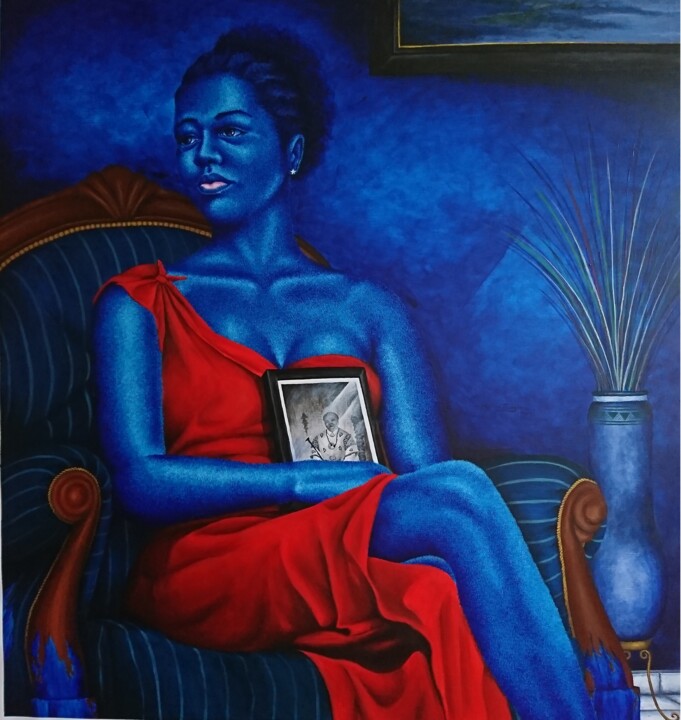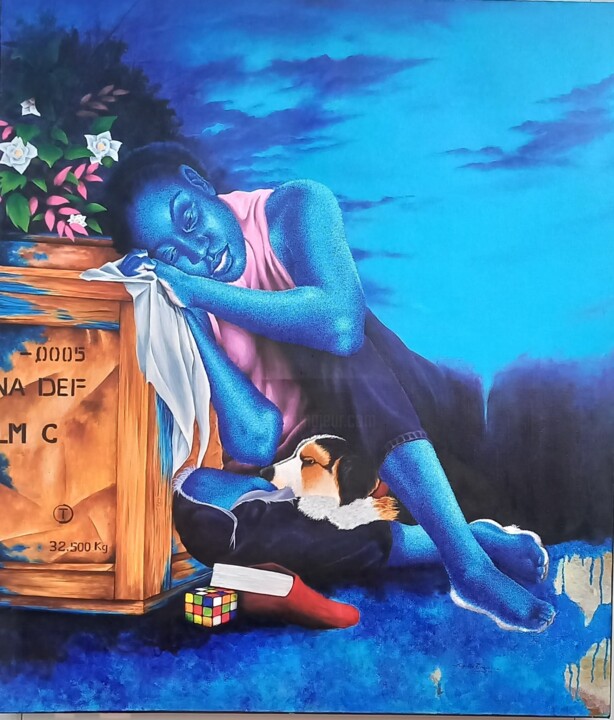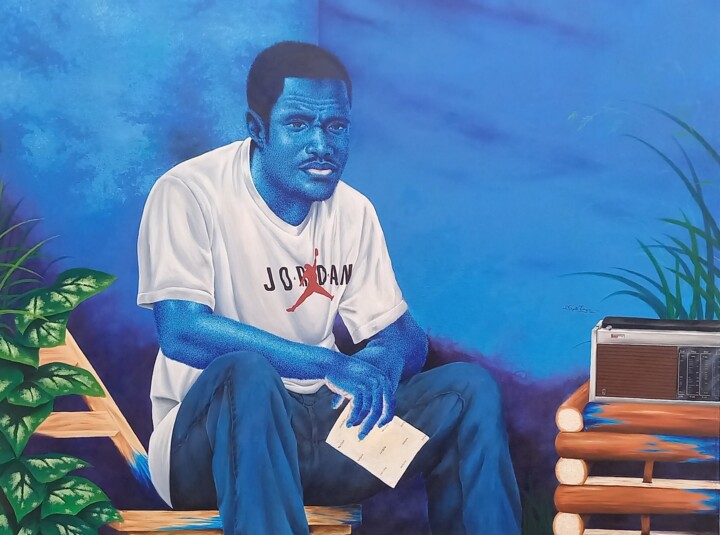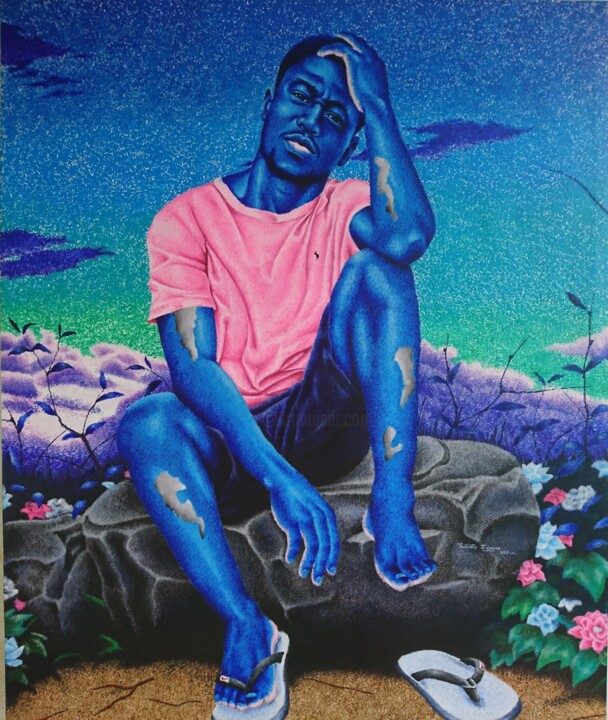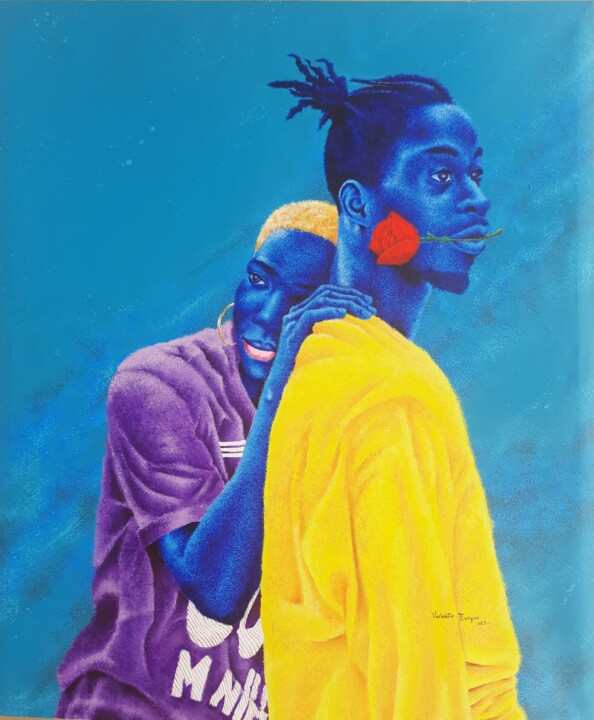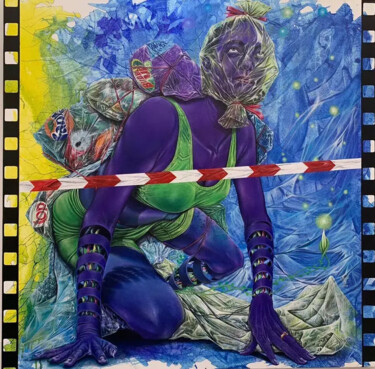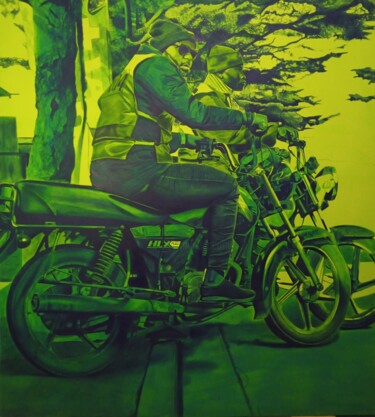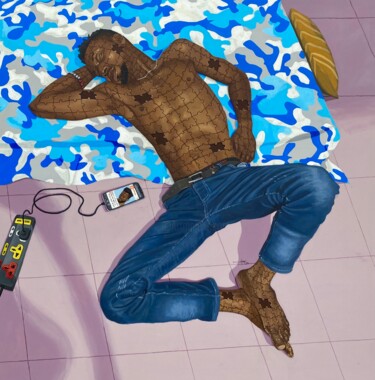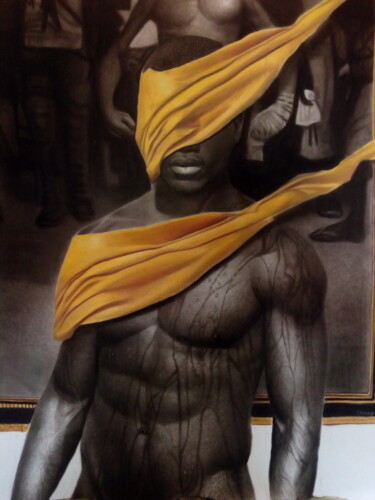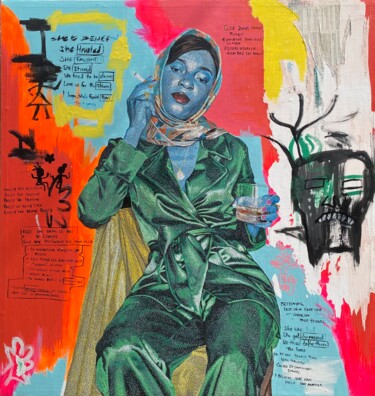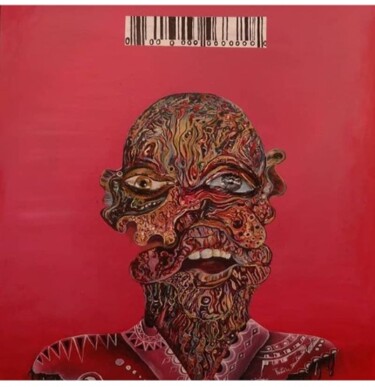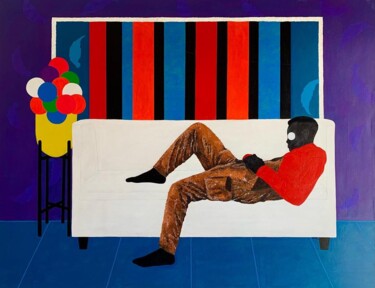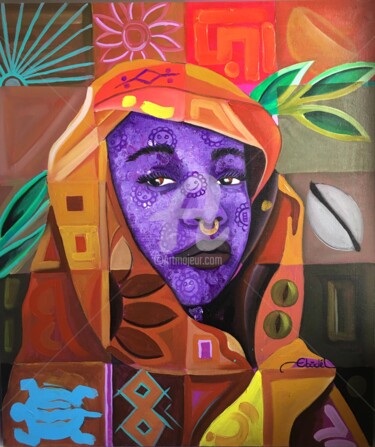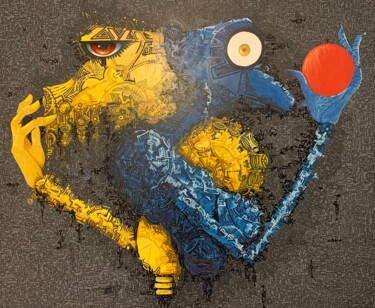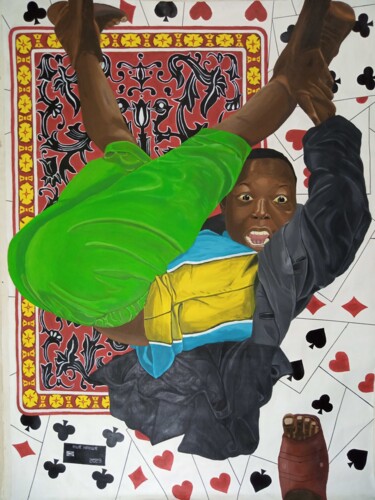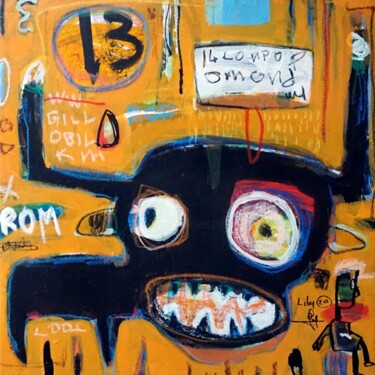History of African painting
Every time I approached the topic of painting, focusing on the African continent, I came across a specific type of documentation: it started from the origins, namely from rock art, and then went on to talk about sculptures, masks, ceramics, and textile art, avoiding to continue with a narrative strictly focused on the main subject of investigation. In fact, the discussion of painting only resumed from the colonial period, when African art was westernized, or when, subsequently, European primitivism looked to the African model. Therefore, I will try to construct a coherent narrative on the pictorial art of Africa, starting with the earliest depictions of animals, humans, and geometric symbols, dating back tens of thousands of years: rock paintings, made with natural pigments on rock surfaces, aimed at reflecting ancient beliefs and cultural practices of the time. The mural paintings of Egyptian tombs are subsequently noteworthy, always conceived to allude to everyday life, deities, or beliefs about the afterlife, unique in this context due to their distinctive use of color and more accurate anatomical representations, intended to give voice to a sophisticated and rich culture. Another fundamental step for the development of pictorial language dates back to the expansion of the Islamic Empire in Africa, a moment when the arts adopted new geometric and calligraphic motifs, as well as the peculiar stylized representations of human and animal figures. If in this context African and Islamic cultures intersected, subsequently, during European colonization, the acquisition of Western pictorial styles was imposed, something opposed by the subsequent movements for African independence in the 1950s and 1960s, aimed at promoting a rebirth of art, with the most authentic cultural roots of the country as a reference point. An example of this was the pictorial language adopted by the Nsukka school in Nigeria, which worked to promote a new African aesthetic, intended to be attentive to combining traditional elements and contemporary influences. Finally, arriving at today, we can take as a model the African artists of Artmajeur, always ready to give life to personal languages, inexorably linked to their cultural background, rich in references to social, political, and environmental issues, intended to transform the brush into a means to explore or criticize contemporary reality. In this sense, African painting is capable of expressing itself according to multiple approaches, demonstrating its versatility, adopting languages that range from figurative to abstract, passing through expressionism and realism. Now it is time to introduce you to five African painters from Artmajeur, whom I have selected as representatives of the talent of an entire continent!
 INCOMPARABLE (2022)Painting by Oluwafemi Afolabi
INCOMPARABLE (2022)Painting by Oluwafemi Afolabi
5 African painters from Artmajeur
Oluwafemi Afolabi
I heard a child crying, he was desperate, so I turned around. I immediately recognized him, he was in his mother's arms, whose face was marked by a suffering grimace of patience, accompanied by the gentle gesture of stroking the child's head, in order to comfort him and finally make him quiet. What I described is the painting "Incomparable" by Oluwafemi Afolabi, which tackles one of the most popular subjects in art history, iconicized by the multitude of Italian Madonnas, ready to hold their children close to their chests. But there was something I had never seen before. It's not just the woman's dress that bears a particular pattern, but also the green skin of the painted subjects, in which the compulsive repetition of the features of some bats is realized. So, in order to understand what we see, it will be necessary to introduce the painter and his point of view: Oluwafemi Afolabi, a Nigerian artist with a degree in painting, graphics, and applied arts, intends portraiture as a genre in which to bring out his typical animal symbolism, realized in the species of chiropteran bats. It is known that these creatures, in some African civilizations, are understood, for their ability to see in the dark, as beings capable of embodying the minds and souls of the dead. In addition, they are comfortable both in the sky and underground, proving to be ambivalent, just as the artist's mother was, who was able to also assume the role of a prematurely departed father-husband. However, the messages conveyed by the painter's brushstrokes are manifold, as he sees art not only as a means to celebrate nature or his family's history, but also to tell the stories of his community, drawing particular attention to the feminine dimension, from which beauty, struggle, love for children, and engaging emotional relationships emerge.
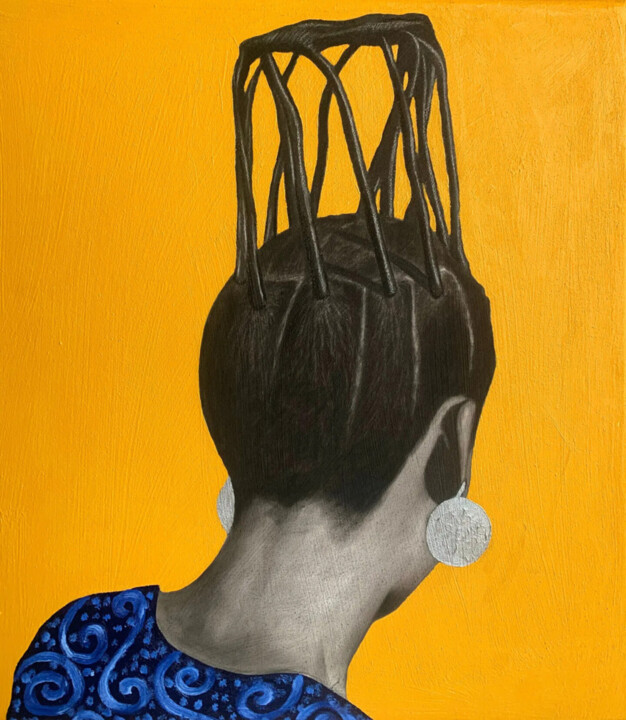 EWA VI (2024)Painting by Pelumi Fasasi
EWA VI (2024)Painting by Pelumi Fasasi
Pelumi Fasasi
Today gravity has disappeared, everyone talked about it on the news. The first effects can be seen in the hairstyle of the model in Ewa VI, the subject depicted by Nigerian artist Pelumi Fasasi! Jokes aside, the figurative work in question, intended to immortalize a woman from behind, drawing attention to her meticulously styled and tall hair, is to be read within a corpus of female portraits conceived to showcase the beauty of African women, as well as the creativity of their hair. Specifically, the latter is rendered, along with the skin of the depicted subjects, in pencil, while painting appears in the clothing and background. Speaking of Pelumi, a young artist with a degree in Fine Arts, his painting technique, primarily incorporating paper and canvas and thus also charcoal and acrylic, aims to add depth and dimension to his work, permeated by constant references to his cultural roots. He certainly prefers to practice his art in the aforementioned genre of portraiture because it gives him the opportunity to work closely with the models, who, together with the artist, construct a realistic and authentic narrative intended to engage the viewer in the most genuine identity of African culture.
 MIRACLE I (2023)Painting by Ganiyat Abdulazeez
MIRACLE I (2023)Painting by Ganiyat Abdulazeez
Ganiyat Abdulazeez
The interpretation of Abdulazeez's portrait, "Miracle I," seems to reverse that of the previously investigated "Incomparable" by Oluwafemi Afolabi, as now it is no longer the skin that is "decorated," but rather the hair of the depicted woman, which hosts multiple specimens of coral plant. In fact, the depiction of the plant, also in this case to be understood as a symbolic presence, aims to pay homage to its healing properties, metaphorically giving voice to the resilience and vitality present within the natural world. Consequently, it seems almost evident how the artist perhaps wants to heal his models, applying the said beneficial plant on their skin, a vegetal presence that was also omnipresent in Ganiyat Abdulazeez's childhood. This particular temporal detail places his art in a dimension halfway between contemporaneity and the world of memories. However, in both contexts, it is certain that a symbiotic relationship between humans and nature is realized, ready to transform the genre of portraiture into a figurative narrative intended to weave together the plant world, healing will, and memory. Returning to Miracle I, the figure of a woman with green skin, placed against an expressionist background of vibrant colors, presents itself to the viewer, fixing them with her gaze. Perhaps she wants to show them how the healing presence of plants on her head has worked in favor of her awareness, making her extremely self-assured, and therefore capable of meeting the gaze of every observer.
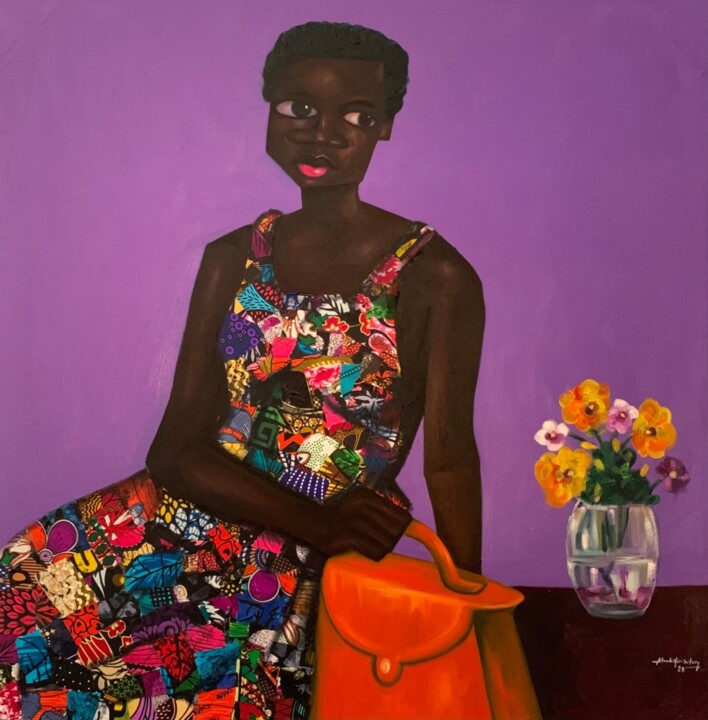 ANKARA REVERIE: AS I WAIT PATIENTLY (2023)Painting by Babatunde Bakare
ANKARA REVERIE: AS I WAIT PATIENTLY (2023)Painting by Babatunde Bakare
Babatunde Bakare
"Ankara Reverie: As I Wait Patiently" is a portrait by Bakare, which takes shape within a sparse room, where only the presence of a table is evident, meant to host a small vase of flowers, standing out against a purple wall, intended to complement the imaginative Ankara dress of the model. The depicted figure has rather whimsical features, with a deformed nose paired with disproportionately large eyes. Despite the oddities, everything just described has a very specific purpose... In fact, starting from the Ankara fabric, the African textile often appears in the works of the Artmajeur artist, denoting a very precise aim: to valorize the identity and promote the cultural appreciation of the painter's home country. His work is indeed to be understood as a vehicle for the dissemination of African tradition, capable of building a dialogue between heritage, identity, and societal interconnectedness, in order to lead the viewer on a visual journey celebrating diversity and the richness of customs and traditions. As for the peculiarities of the aforementioned facial features, the eyes, considered to be the windows to the soul, are intentionally large to allow them to be easily read in their emotions, as well as their inner experiences. This fulfills the intentions of the painter born in 1992, who sees the sharing of emotions as healing and necessary, as when one engages in dialogue with others, they realize they are not alone in experiencing certain feelings.
 TERRE NATALE (2024)Painting by Valentin Cyrille Evegue
TERRE NATALE (2024)Painting by Valentin Cyrille Evegue
Valentin Cyrille Evegue
"Terre Natale" is the artwork I have chosen to encapsulate the work of Valentin Cyrille Evegue, a Cameroonian painter born in 1998, whose portraits, set against predominantly blue backgrounds, are intended to evoke the skin tone of his partially realistic models. In this case, a boy wearing a fluorescent jacket is depicted, leaning one of his elbows on a wall set in a lush, green, floral context where the sky occupies much of the background. The entire scene is conceived in the manner in which the artist perceives the genre of portraiture, namely as a means to explore humanity and, at the same time, individuality. This duality synthesizes the modes of existence, which are dissected through the interest presented, both towards bonds of love and friendship, as well as towards more solitary and introspective views of the world. Consequently, the human condition is revealed in its entirety, transcending race, ethnicity, or gender differences, to analyze the universal experiences of joy, sorrow, fragility, and vulnerability that make us all siblings. In summary, the work of the self-taught artist can be defined as follows: Valentin Cyrille Evegue, with every brushstroke, seeks to convey the profound complexities of human existence, engaging viewers to reflect on the questions that have always accompanied our kind, giving life to a concept of shared humanity.

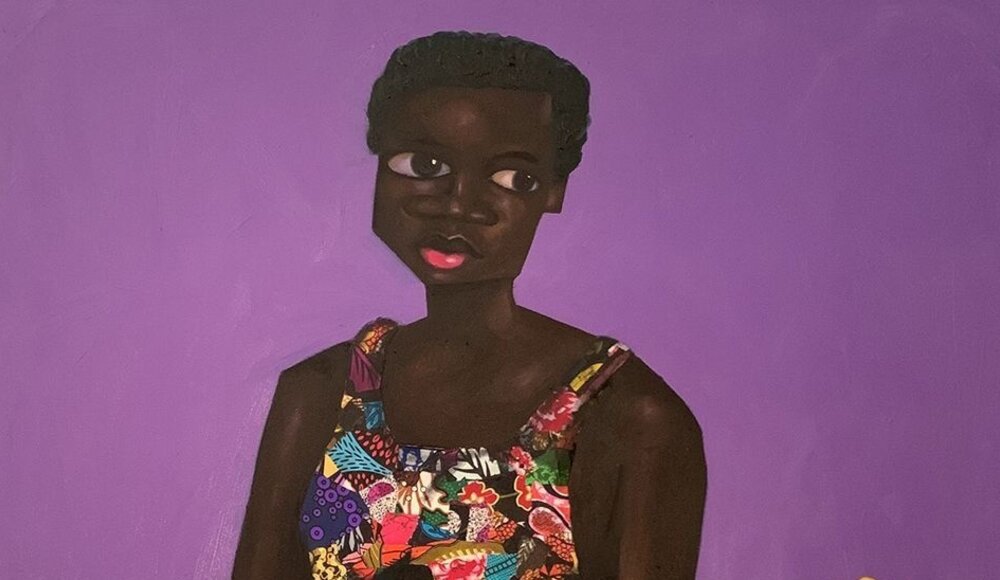
 Olimpia Gaia Martinelli
Olimpia Gaia Martinelli
